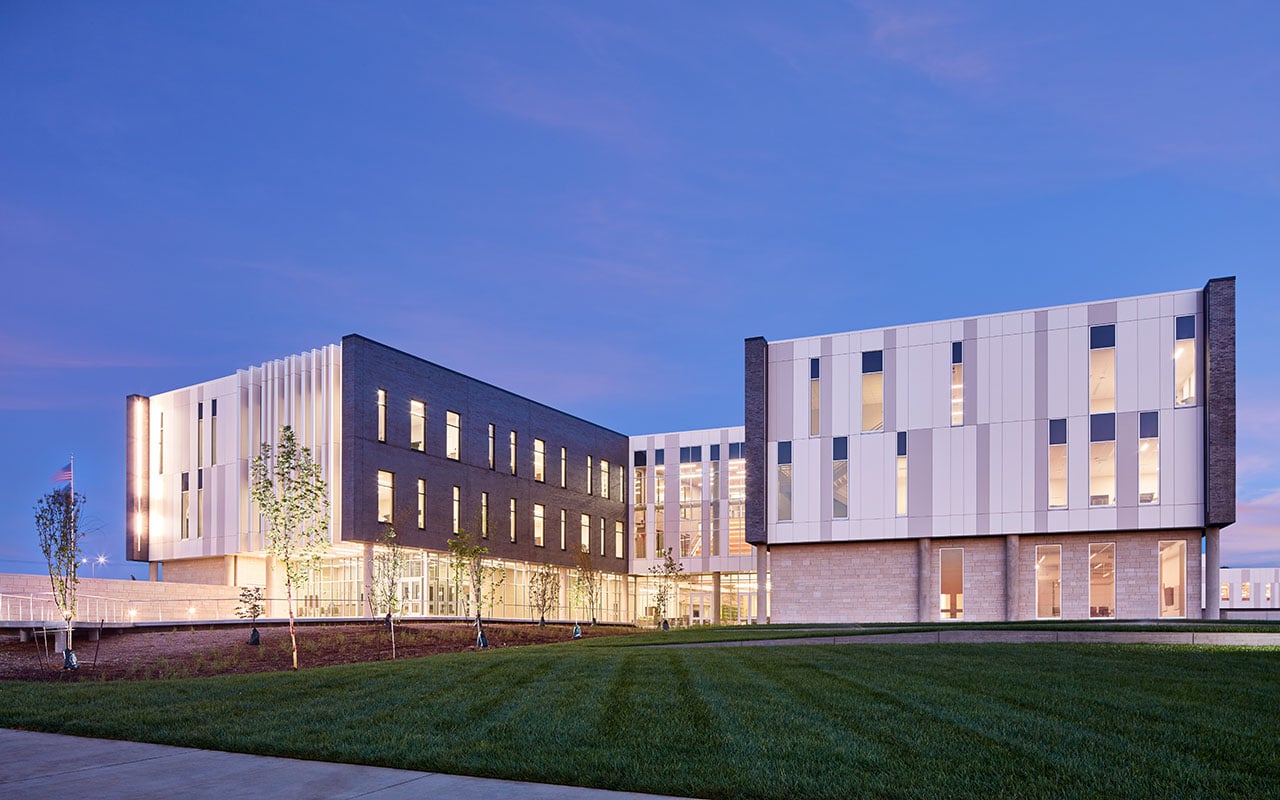KU Integrated Science Building
Background
To enable more researchers to pursue discoveries in life sciences and material sciences, the University of Kansas (KU) is building an Integrated Science Building (ISB). Located on KU’s main campus in Lawrence, Kansas, the new building is a significant part of the university’s Central District Redevelopment Plan.
“Finding a balance between teaching and research, the ISB will house new chemistry teaching labs that help ensure students have access to the latest techniques, while also allowing students to see research advances in the same building,” said former KU Provost Jeffrey Vitter. One of the scientists who will use the new facility is KU distinguished professor Steven A. Soper, PhD. Dr. Soper is developing a new tool he calls “Lab on a Chip (LOC)” to diagnose and monitor treatment of cancer patients. A clean room in the ISB will allow his team “to scale the production of LOCs to make them a commercially viable platform,” said Soper. Designed by Perkins + Will, the ISB is a public-private partnership between KU and developer Edgemoor. Scheduled opening is summer 2018.
Challenge
As with any laboratory design, sufficient airflow control is crucial for protecting lab occupants from airborne hazards, such as toxic fumes, reactive gases and pathogens – all common in life sciences and material sciences research labs.
The KU Integrated Science Building presented additional airflow control challenges. Chief among these was a “very aggressive system diversity of 60%, which grew more complex as the project team completed the design,” said Rex Mustain, president of airflow controls representative Associated Air Products. Diversity is designing a system for less capacity than the sum of all peak demands. This project’s 60% diversity level is well above the 10% to 20% target commonly used in labs. This requires precision airflow control and high turndown venturi valves to meet such demanding standards while maintaining safety. In short, the airflow control system design needed to account for frequent high demand loads to ensure safe air in a building with difficult-to-control spaces – numerous open labs and atriums – while also being energy efficient.
Solution
KU has used Phoenix Controls products – including venturi valves for their fume hoods, and direct digital controls – since 2005 in 10 or more facilities on campus, including the recently upgraded Malott, Haworth and Learned Halls, and Simons Labs.
As Phoenix Controls solutions have become the standard for KU, the project team installed the following Celeris® high speed, chemistry control platform products in the Integrated Science Building:
- 560+ Phoenix Controls CELERIS High Speed venturi valves
- 217 VANTAGE Digital fume hood controls
- 10 RMI300 Smart room integrators for distributed control
In addition to these products’ superior performance and reliability, Mustain explained that the Phoenix Controls solution was the “clear choice for fast track construction of a world class lab under a tight budget.” “To balance safety and energy savings, we also included a mix of medium-pressure and low-pressure valves throughout the ISB,” said Mustain. “There’s a common misperception that you can’t mix these valve types, but the Phoenix Controls venturi valve’s high turndown airflow metering design that provides repeatable mechanical pressure independence enables us to provide low- and medium-pressure valves on any system design.”
Benefits
“Safety is the highest priority in any lab,” said Mike Russell, director of KU Environmental Health and Safety. “The lab ventilation system, along with its various connected hoods and exhaust devices must reliably capture, contain and exhaust potential hazardous lab emissions. For more than 12 years Phoenix Controls systems have performed exceptionally well across our campus, and provide an assurance of safety, as well as allowing us the ability secondarily to address energy savings.”
The Phoenix Controls solution “provides KU with low cost of ownership and system flexibility for a world class safe lab on a budget, that can be used to attract key research talent and grants – and ultimately peace of mind,” added Mustain.
Specifically, the Phoenix Controls system allowed Mustain and AAP to meet the aggressive 60% diversity design requirement, while being able to control air with a differential pressure as low as 0.3” wc at the room level – for both safety and energy savings.
Project Details
- Size : 292,000 sq. ft.
- Completed : 2018
- Total Project Cost : $350 million
- HVAC Equipment : Phoenix Controls Celeris control platform, venturi valve, fume hood controls, RMI300 room integrator devices



